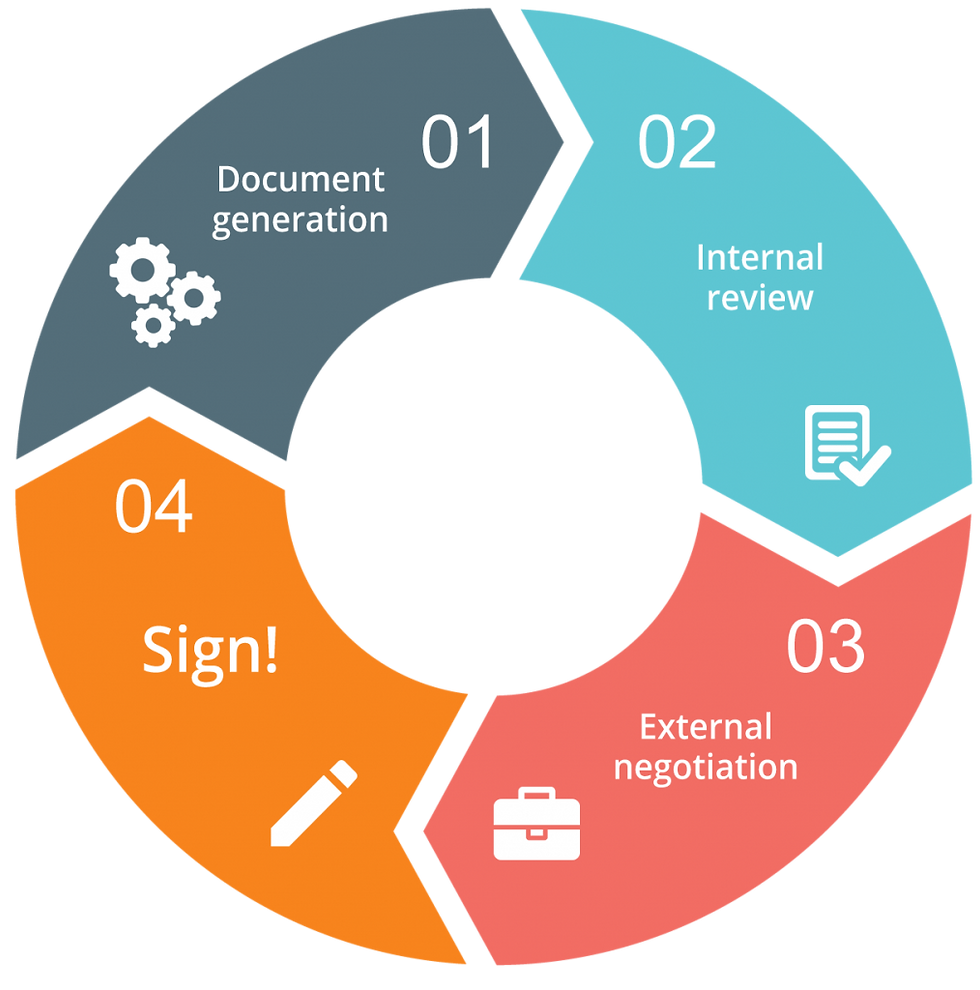The Importance of Collaboration in Document Review
- joelongfin
- Nov 14, 2024
- 4 min read
In today’s digital workplace, effective collaboration is critical for efficient document review processes. Document review often involves multiple departments, stakeholders, and extensive feedback loops, and without structured collaboration, projects can suffer from miscommunication, delays, and costly mistakes. Emphasizing collaboration not only speeds up the document review cycle but also enhances quality, accountability, and overall project outcomes. Here’s a closer look at why collaboration is so important in document review and how it can benefit your organization.

Why Collaboration Matters in Document Review
Reduces Errors and Inconsistencies
When multiple stakeholders are involved in reviewing a document, their unique perspectives help identify potential errors, inconsistencies, and areas needing clarification. For instance, a legal department may focus on compliance details, while marketing may review branding and tone. Each reviewer’s input contributes to a comprehensive review that minimizes the risk of errors making it to the final draft. This collaborative approach ensures that documents are accurate, consistent, and well-aligned with business goals.
Improves Efficiency
Collaboration streamlines the document review process by centralizing feedback in one place. Tools, like shared online platforms or document review software, allow reviewers to see comments, suggest changes, and mark approvals in real-time. This eliminates lengthy email chains and minimizes the chance of lost feedback. By allowing multiple stakeholders to review and discuss a document simultaneously, collaboration accelerates the revision process, enabling faster decision-making and faster project completion.
Enhances Transparency and Accountability
Transparency in document review is essential for tracking changes, understanding who contributed specific insights, and ensuring accountability. Collaboration tools that allow for version tracking and reviewer comments make it easy to see who suggested which changes and why. This level of visibility enhances accountability, as each team member is aware of their responsibilities and the impact of their contributions on the final document. Clear accountability also helps prevent repeated errors, as team members become more mindful of quality and detail in their reviews.
Facilitates Knowledge Sharing
Collaboration in document review brings together diverse expertise, encouraging knowledge sharing among departments. When employees from different functions review a document, they bring varied perspectives and insights that can improve the document’s quality and relevance. This collaborative knowledge-sharing process not only enhances the document’s accuracy and effectiveness but also builds a culture of learning within the organization. For example, a product manager may understand technical aspects that a marketing professional might overlook, while a legal expert ensures compliance.
Promotes Employee Engagement
When employees are encouraged to collaborate and contribute to important projects, it increases their sense of ownership and engagement. Involving team members in document review processes allows them to take part in shaping key company communications, boosting morale, and creating a sense of teamwork. An engaged team is more likely to invest time and effort in reviewing documents thoroughly, which leads to higher quality output and fewer issues in the future.
Tools and Best Practices for Collaborative Document Review
Implementing collaborative tools and best practices can significantly enhance the document review process. Here are some strategies to encourage effective collaboration:
Use Cloud-Based Document Review Platforms
Cloud-based platforms like Google Workspace, Microsoft SharePoint, and specialized document review tools offer centralized collaboration features, including live editing, comments, version tracking, and user tagging. These tools make it easy for multiple reviewers to access, review, and comment on documents simultaneously. Using cloud-based software also ensures that everyone has access to the latest version, reducing confusion caused by multiple file copies.
Define Clear Roles and Responsibilities
Assigning specific roles within the review process—such as primary reviewer, subject matter expert, or editor—ensures that everyone knows their responsibilities and can contribute effectively. A structured approach prevents overlaps and enables each team member to focus on their areas of expertise, making the process more efficient and thorough.
Set Deadlines for Feedback
To keep the review process on track, establish clear timelines for feedback. Setting deadlines for submitting comments and completing reviews ensures that the document doesn’t get delayed by extended feedback loops. Regularly remind team members of these deadlines to ensure timely contributions and maintain a steady workflow.
Encourage Open Communication
Effective collaboration requires open lines of communication. Encourage team members to discuss their suggestions, raise concerns, and ask questions when needed. Many document review tools offer in-app messaging or commenting features to facilitate real-time discussions and address issues as they arise, fostering a more collaborative environment.
Conduct Regular Review Meetings
For complex documents, holding regular review meetings can help team members align on goals, address feedback in real time, and ensure that the document is progressing as planned. Meetings also give everyone a chance to discuss major revisions and agree on final changes, reducing the need for lengthy back-and-forth exchanges.
Final Thoughts
Collaboration is vital to an efficient, accurate, and effective document review process. By fostering a collaborative environment, you can reduce errors, enhance accountability, and leverage diverse insights to create documents that support your business goals. Implementing the right tools and best practices will further streamline the review process, making it easier for teams to work together productively and create high-quality documents.
SITES WE SUPPORT
Budgeting Process - Weebly
SOCIAL LINKS



Comments